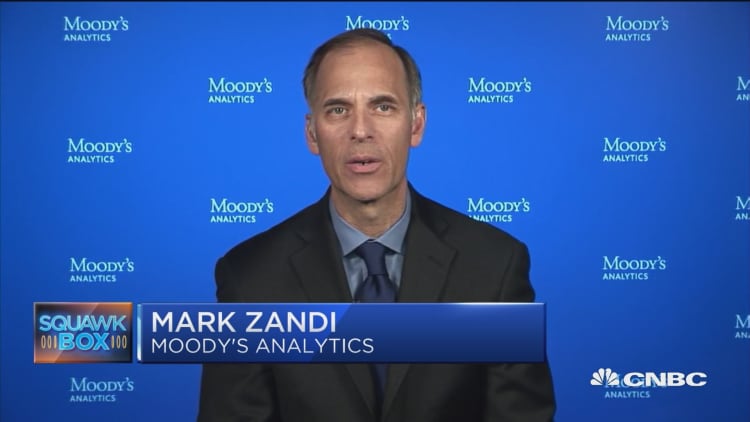
American consumers could lose faith in the economy if federal workers don't go back to work soon, Moody's Analytics chief economist Mark Zandi warned Friday.
"If this drags on into February, March, then growth rates are going to fall to a place where unemployment will start to rise," Zandi said in a CNBC interview. "That's fodder for recession."
Shortly after Zandi's appearance on "Squawk Box," the University of Michigan said its preliminary reading on consumer sentiment for January showed a drop to its weakest level since Donald Trump won the presidency in 2016.
Zandi said the economy was looking "wobbly" heading into the new year even before the start of the partial government shutdown, the longest on record, which on Friday entered Day 28.
"If you go back a year ago, GDP growth was closer to 4 percent. That was all juiced up by the deficit-financed tax cuts," he said. "Now we're down to about 2 [percent.] And if the shutdown drags on we'll probably go below 2 [percent.] And that's a key threshold."
The economic drag from a shutdown lasting until the end of the first quarter could be as much as 0.5 percent, Zandi estimated, though he hopes President Donald Trump and Democrats can resolve their funding differences and send the 800,000 federal employees back to work.
Earlier this week, Ian Shepherdson, chief economist at Pantheon Macroeconomics, was much more pessimistic than Zandi, saying the combination of the shutdown and the tendency of the first quarter to be statistically weaker than the other three means growth could turn negative.
Meanwhile, there are no signs of an agreement on the horizon, as the president digs in on his demands for border wall money and Democratic leaders refuse to back down on their position to deny the president such funds.
According to a White House official, the administration sees gross domestic product slowing about 0.1 percent each week the shutdown continues, a doubling of its original forecast.
— Reuters contributed to this report.


